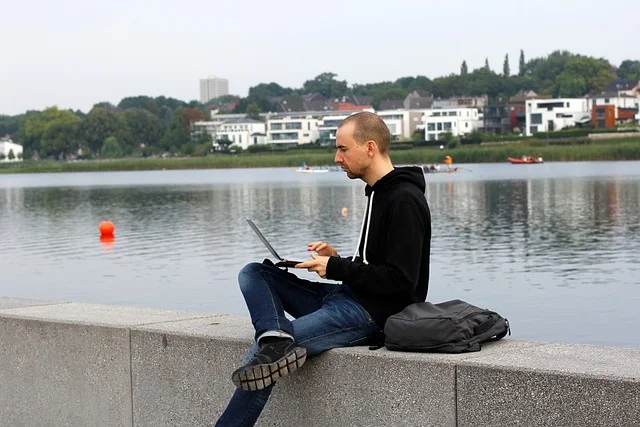Digital Nomadism: The Allure of Living and Working From Anywhere
In recent years, the concept of being a digital nomad has captured the imagination of many seeking an alternative way of living. Digital nomads embrace a lifestyle of traveling the world and working remotely, liberated from the confines of traditional office life. While this pathway has been made possible for decades thanks to technology, the digital nomad movement has hit a recent critical mass. What’s driving the rising popularity of this branded form of remote work in 2023?
Allure of Freedom and Flexibility
At its core, the digital nomad appeal stems from the unprecedented gift of freedom these internet-enabled, laptop-fueled wanderers enjoy. Like untethered hot air balloons, they can choose to float wherever the winds may take them. With simply a laptop and a reliable WiFi connection, work is possible from tropical beaches to mountain cabins. “The world is your office” takes on new meaning when you can work from jungle hammocks in Thailand just as easily as chic cafes in Vienna.
This freedom and flexibility understandably resonate with our deep human longing for autonomy and adventure. Who wouldn’t want to escape the drudgery of morning commutes and cubicles for the thrill of making a last-minute decision to extend a trip for a few weeks and work from Parisian sidewalk cafes instead? Digital nomads have the luxury of building lives centered around their unique interests and rhythms instead of mandated office schedules. For many, these liberties represent a dream come true.
Blending Work and Wanderlust
Digital nomads can satisfy their work responsibilities while still exploring passions for travel, cultural immersion, and new experiences in ways previously not possible. The destination-hopping lifestyle offers the chance to combine work with activities like surfing in Bali, practicing Spanish in Mexico City, or splitting time between a small Italian village and Prague.
Of course, perpetual travel is not suited to everyone long-term. But the broader revelation is that where we live and create value is not as fixed as traditional assumptions have dictated. Environmental coder Robin Lewis, who shifted to being a digital nomad in 2019, described his experience:
“I used to think I had to choose between career ambitions and adventures. Now I realize with the right remote job, I can have both simultaneously."
Lower Costs and Greater Options
Digital nomads also capitalize on the financial benefits of geo-arbitrage, splitting time between lower-cost countries and earning an income tied to higher-paying regions. Reduced travel costs thanks to budget airlines and lodging platforms like Airbnb also facilitate a transient lifestyle on a budget. Countries like Thailand, Croatia, Mexico, and Iceland actively court digital nomads through formal visas, further expanding possibilities.
Recent data confirms remote work and relocation interest skyrocketed amidst the pandemic, though the desire was brewing before COVID-19. A 2023 MBO Partners survey revealed over 17.3 million Americans then already identified as digital nomads, forecast to grow. Remote job postings on sites like FlexJobs and LinkedIn have surged over 50% in the past two years. The infrastructure enabling location-independent work continues proliferating rapidly.
Drawbacks and Challenges
Of course, the romanticized social media depictions of digital nomads traveling blissfully mask the approach’s drawbacks. Visa restrictions, taxation complexities, healthcare access hurdles, and communication challenges can quickly create headaches. Digital nomads sacrifice proximity to family and friends, giving up comforting staples of stability like a home-based community. The transient lifestyle also makes relationships and dating more difficult.
Many destinations like Bali grapple with "over-tourism" spurred by sudden influxes of digital nomads and remote workers concentrated in a few hotspots. Housing inflation and gentrification pricing out locals have become concerning byproducts of the trend in once quaint villages turned makeshift co-working hubs.
Burnout and loneliness affect nomads unprepared for the taxing realities of perpetual motion. When your home and office are the same, work-life separation blurs. Is checking emails from a hammock on a beach really "work" when it looks like leisure Instagram fodder? The seamless integration of work and travel poses unique psychological challenges.
An Enduring Movement
The digital nomad movement has reached a size and maturity to become more than just a fleeting trend. Major companies like Airbnb and United Airlines now actively market to and support digital nomads as a sizable customer segment. Governments are codifying remote worker visas in recognition of their economic contributions. While not everyone seeks such radical professional and geographic freedom, elements of the digital nomad ethos will likely stick.
At its core, this lifestyle spree reveals locational flexibility need not be sacrificial. With the right mindset, technology tools, and professional opportunities, we can curate locations and schedules optimized for who we aspire to be. Of course wanderlust has always existed - but for digital nomads, it no longer needs remain just a daydream.









